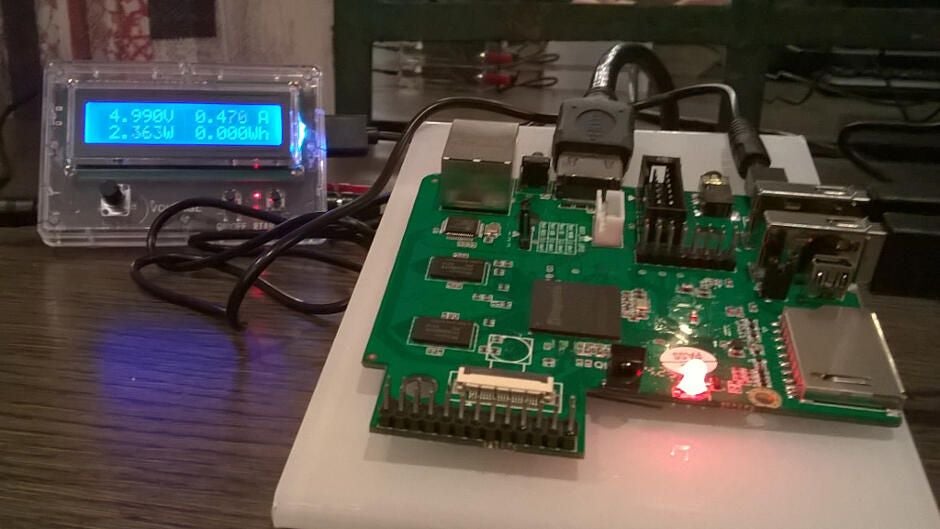Hands-on with the latest challenger to the Raspberry Pi
Image 1 of 8
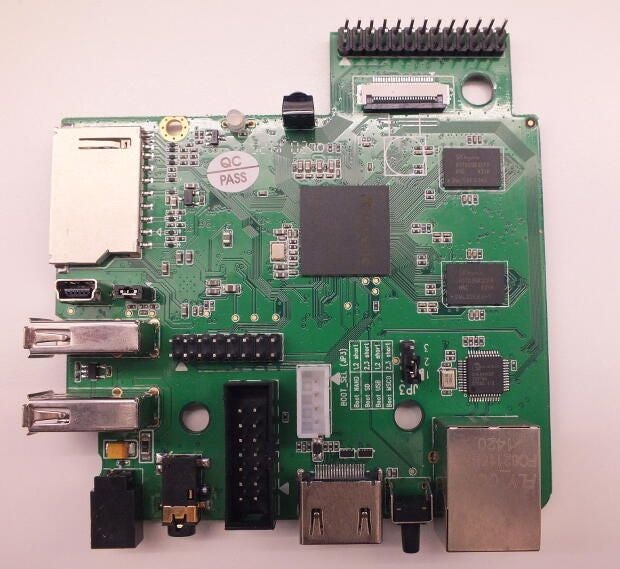

MIPS Creator CI20
MIPS Creator CI20
The four million or so sales of the $35 Raspberry Pi has inspired the creation of a number of tiny, low-cost computers.
The latest Pi-alike is the MIPS Creator CI20 – a single board computer that is more powerful than the Pi, but also more expensive.
The board, from British chip designer Imagination Technologies, features a dual-core processor clocked at close to twice the speed of the Pi’s CPU, and double the memory of the highest-specced Pi. It uses the graphics processor that powered the original Amazon Kindle Fire and runs 1080p video at 30 frames per second. For 3D gaming and graphics it includes supports OpenGL 2.1, which allows it to run a greater range of 3D games without the need for tweaking.
When it comes to connectivity the CI20 also trumps the Pi, coming with built-in support for 802.11n wifi. It also features on-board storage.
Power wise the CI20 draws 2.5W under load according to Imagination, which it says puts its consumption somewhere between the Pi Model A+ and B+. Its energy usage is low enough that the board is being considered for several battery-powered projects, such as driving robots.
The board is available to pre-order for u00a350/$65 or 63 euros in North America and Europe from http://store.imgtec.com/, and is expected to start shipping from the end of January 2015.
Close to 1,000 boards have already been sent to university students, developers, and hobbyists who took part in a contest to suggest a use for the board.
Alongside the usual projects to build home automation systems, media servers and retro game emulators, others have branched out into using it to control plant hydroponics and even more leftfield uses.
“One person thinks their cat is overeating and wants to use it to build a monitor,” said Alex Voica, technology PR specialist for Imagination Technologies.
The specs
- rn
- Processor: 1.2 GHz dual-core, MIPS32-based Ingenic JZ4780 SoC, 32kB L1 I- and D-cache, 512kB L2 cache
- FPU: IEEE754 Floating Point Unit, XBurst MXU
- Multimedia: PowerVR SGX540 GPU, hardware-accelerated video playback up to 1080p at 60 fps. Supports OpenGL and Open GLES.
- Memory: 1 GB DDR3 SDRAM, 4 GB flash memory, 1 x SD card
- Audio: AC97 audio, via 4-pin input/output jack and HDMI connector
- Camera interface: ITU-R BT.645 controller
- Connectivity: 10/100 Ethernet, 802.11 b/g/n, Bluetooth 4.0. Has Ensigma RPU.
- Display: 1 x HDMI up to 2K resolution.
- USB: 1 x USB host, 1 x USB OTG device
- I/O peripherals: 2 x UART, 25 x GPIO, 2 x SPI, I2C, ADC, expansion headers, 14-pin ETAG connector


Runs Android
Runs Android
The CI20 board also runs the Android operating system – alongside a selection of other Linux-based distros. Here you can see Android KitKat (4.4).
In demos the operating system was perfectly usable to browse the web, albeit running a little bit more slowly than on a high-end Android handset.
However, when running the Antutu 3D graphics benchmark the frame rate dropped as low as 4.5 frames per second.
The browser also crashed once during the demo, although Imagination says it expects stability to improve.


Desktop software
Desktop software
The Raspberry Pi already has a host of software tailored to the various uses you might have for the Pi. A dedicated media centre, operating systems optimised for performance and for ease of use, along with a suite of tools to help people learn programming such as MIT’s drag and drop programming language Scratch and a Python integrated development environment.
Imagination is hoping that same software ecosystem could grow up for the CI20 over time. However, at present, the board supports the Debian 7.0 operating system, as well as the following Linux distributions. Gentoo, a source-based Linux distribution that is compiled locally. Yocto Sato, a small distro aimed at embedded systems with a mobile UI. Angstrom, a longstanding embedded distribution. Arch, a light-weight, rolling Linux distribution.
The Debian desktop seen here felt reasonably responsive – although obviously more sluggish than if running on a modern laptop or desktop computer. Similarly the pages took longer to load in the Iceweasel browser than you’d expect on a decent 802.11n wifi connection on a PC.
The board’s PowerVR Series 5 architecture is more geared towards 3D effects than it is to handling some of the fancier effects found on modern Linux desktops, such as Ubuntu’s Unity interface said Ian Oliver, senior director of developer tools at Imagination.
The Creator CI20 also features the FlowCloud toolset to help develop software for the Internet of Things.
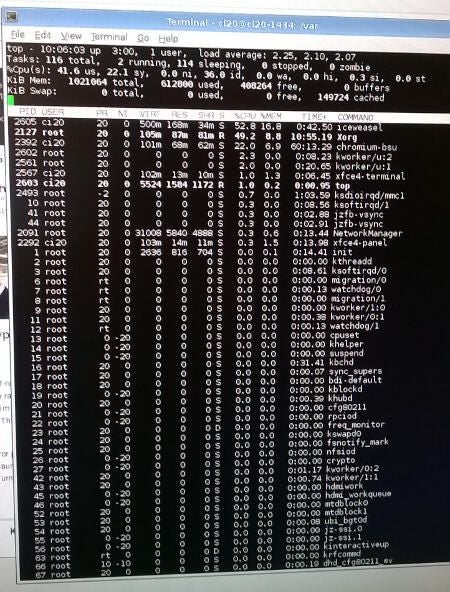

Desktop performance
Desktop performance
Here you can see the CPU usage for the Iceweasel browser and a game, chromium-bsu, running on Debian 7.0.
Power consumption
This demo is designed to show off the graphics capabilities and low-power consumption of the board.
The PowerVR demo running on Debian demonstrated the board’s GPU’s ability to handle various shader and other graphics effects, such as simulating how glass bends light and warps the 3D image sat behind it.
The demo maintained a smooth frame rate while not pushing the power consumption above 2.5W, as seen here.
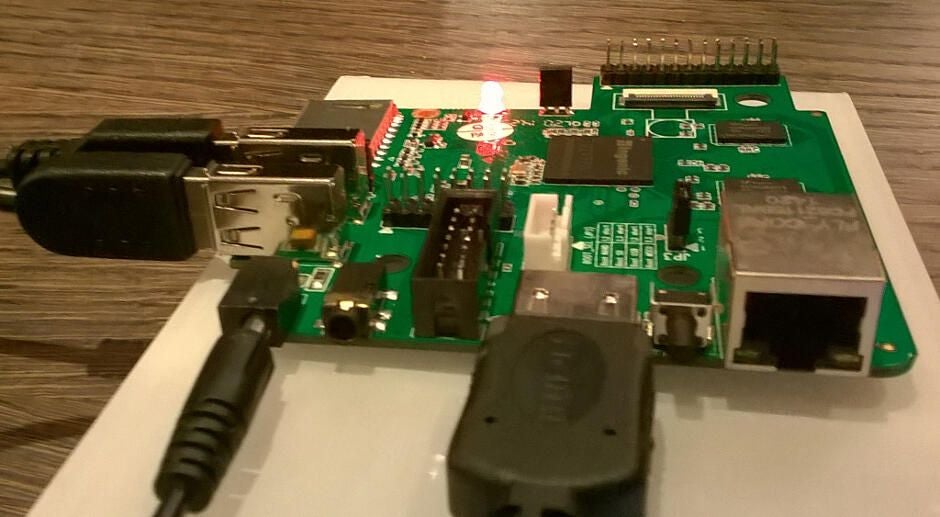

Open schematics
Open schematics
The schematics for the board are all open and available for download from the site elinux.org. However, some of the drivers for the board – for example some of the userland components for the GPU – are closed source.
Pi owners should be able to run some of their expansion boards and add-ons with the CI20, as the new board has Pi-compatible expansion headers. Users can also debug attached hardware, using the MIPS EJTAG port.
The CI20 is the first in a series of single-board computers planned to be released by Imagination.
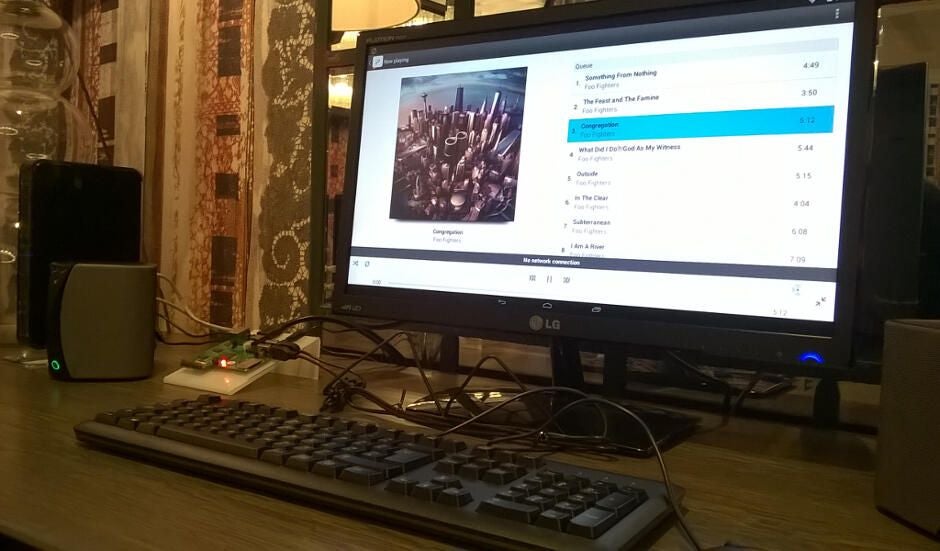

Music playback
Music playback
The board playing music using Imagination’s FlowAudio software.
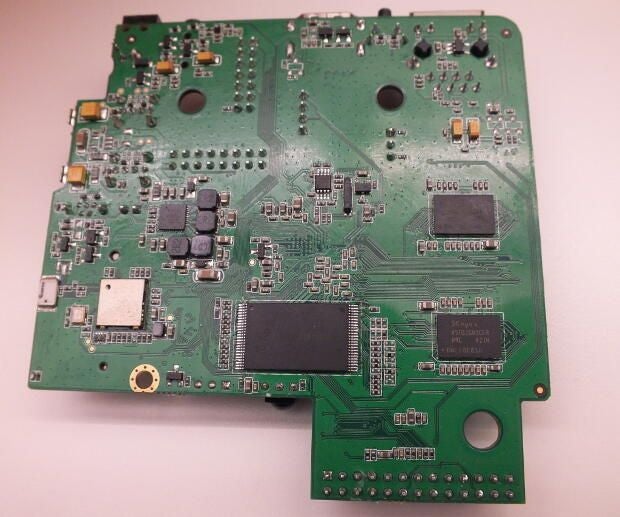

MIPs architecture
MIPs architecture
Unlikernthe Raspberry Pi, which is built around an ARM-based system on a chiprn(SoC), the CI20 is based on an SoC built around the MIPSrnarchitecture.
-
Account Information
Contact Nick Heath
- |
- See all of Nick's content
